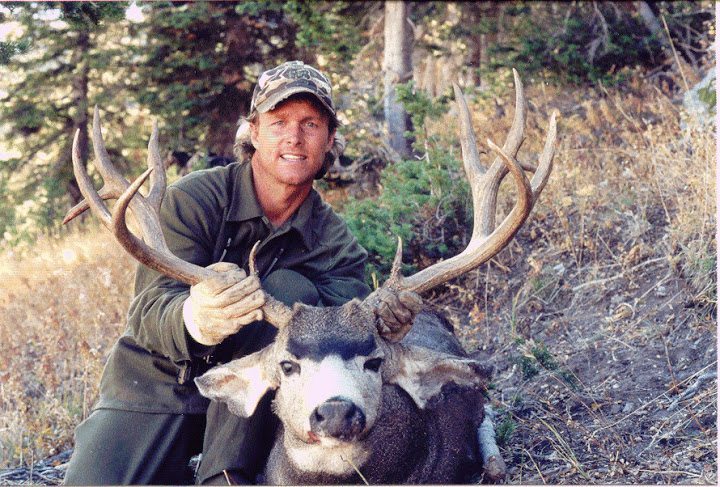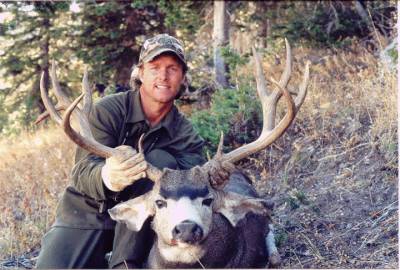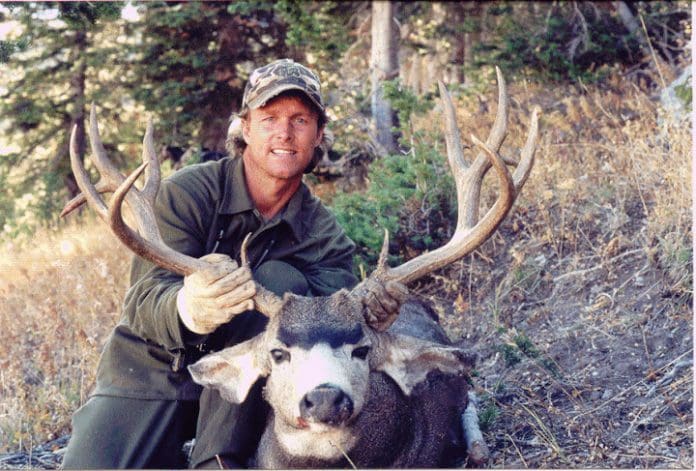
Last week, I introduced my latest blog series, Killing Big Mule Deer: The Where or the How? (KBMD.) I’m convinced the “How” is more important than the “Where”. Let’s dive into my second installment: “Moving in Deer Country, Part I.”
A human being in mule deer country is a stranger in a strange land. Our very mannerisms- like how we walk, turn our heads, swing our arms, cough, sneeze, and breath- are like big warning signs to older, experienced mule deer. It’s my opinion that older bucks rarely stray from the cover in most hunted units and to kill them, you have to get closer. To get closer, you have to overcome their incredible (but vulnerable) visual and auditory senses. You have to learn how to move in mule deer country undetected.
Writing this blog post was difficult for me. I’m Type-A personality, was a diagnosed hyperactive child (the term used before ADHD) and still live life at a whirlwind pace. For me to slow down in mule deer country has been a 25-year endeavor and I’m still failing miserably. Writing this, I took a stroll back in my mind over the last 20 seasons. In just a few minutes, I remembered at least a dozen great-to-giant bucks that got away because I moved too fast. Most of these bucks were under 100 yards and would have been chip shots had I moved slower. I’ve got a long way to go. However I’m confident, if only due to my failures, that I can help you kill more big deer if I can convince you to move slower in mule deer country.
The vision of mule deer is designed to see movement. With a 310 degree field-of-view, there is only a small slot behind their heads where they can’t see (a human only has 180 degrees). However, they struggle to identify stationary objects, especially if the object is obscured and not skylined. That is the chink in their armor.
Their hearing is also incredible and greatly underestimated by hunters. Cup your hands behind your ears and notice how much sound is magnified. Now imagine if you had their funnel-shaped 9-inch ears swiveling in every direction. Deer can also hear at a much wider frequency than humans. They react to noise we aren’t even aware of, especially high-frequency noise like a zipper tinging against a rifle barrel.
The only way to overcome these senses is to move slowly.
I’ve spent years trying to figure out how much movement I can get away with around mule deer. My conclusion? Not very much. If you are in open country, moving more than 100 yards per hour (0.06 mph) is a dead giveaway to mule deer that are within 200 yards. If you can see the deer and time your movements right, you can move a little faster but not much. If you’re in thick cover, you have to be closer to 50 yards an hour (0.03 mph!) These paces are painstakingly tough to maintain. I have to be confident I’m near deer to keep this pace and is why I pay close attention to tracks and try to hunt areas I know very well. Then I know where I have to move slowly and where I don’t.
The speed of body movement, not just walking speed, must also be controlled. In civilization, if we hear a sound, we turn our heads toward it. In deer country, that simple movement done at normal speed can alert deer. Even bringing your binoculars to your eyes at normal speed is enough to spook deer. I could go on, but you should be getting the point- you must control all body movement- arms, torso, and head to overcome their visual sense for movement.
By moving slow, you are also much better able to control unwanted sound. Most of us only worry about breaking sticks, kicking rocks, and wearing quiet clothing, but you have to be even more careful. Your arms brushing against your torso, your pant-cuffs touching each other, your weapon contacting small branches, coughing, spitting- everything has to be considered. Moving slower lessens the frequency and intensity of unwanted sounds. Mule deer don’t live in a silent world so by controlling your sounds, they become vulnerable.
You should move in a way that you see deer before they see you, virtually every time. Next time you’re around deer- any deer- slow down everything. I think you’ll begin to see what I mean.
Read Part II of Moving in Deer Country here

I killed this nine-year old, 36-inch wide Idaho Buck on a general rifle hunt at 150 yards in the timber. I’d glassed him nine days before from a few miles, but to kill him, I had to get in his bedroom. I overcame his vision and hearing by sitting quietly for an hour with my back against a big rock. He never knew I was there and consequently exposed himself in a small opening. All I had to do was slowly raise my rifle.
Make sure you “Subscribe to blog” top of page, right side under links “Fitness/Other” so you don’t miss my next installment in “KBMD, Moving in Deer Country, Part II.” I’ll introduce you to the master of movement in deer country. I’ve learned most of my information on this subject by simply watching him.




















Good stuff Robby! I imagine everybody that has spent time chasing the ghosts can remember that feeling in their stomach watching a deer run out of the country due to not going slow enough.
Robby, could you expand a little on getting into and living in mule deer country. What are some things you do to reduce the likelyhood of spookiing deer before you know which area they are using (Sometimes I feel like I have to cover a lot of country to find where deer are living)? How close are you able to camp? Do you worry about fires? And so on.
Justin, good questions and some of those will be answered in upcoming posts in the blog series on Killing Big Mule Deer. You’re right in that you have to cover a lot of country to find mule deer. That is why scouting pre-season/knowing your area are so important. That way, once hunting season rolls around, you don’t have to cover a bunch of country and can reduce your chance of spooking deer and are better able to focus your time & energy. I rarely camp within a mile of mule deer I’m hunting. Again, that is why scouting/knowing your area is so important. When I know where the deer are, I can camp accordingly. So many hunters camp in the best looking country and while they are setting up the tent, the bucks are headed for the timber. Most make this mistake simply because they don’t realize it. No, I don’t build fires near deer I’m hunting. One more flag to alert them. “Near” is a relative term but a mile away is a good rule of thumb. Stay tuned.
I like the writeup Robby thanks for sharing your experience and knowledge with us. Good hunting and luck in the draw this year
If u want to subscribe to your blog postings do u have to click subscribe on every blog or when u click it once you will get all the blogs u write. Thanks
brady
Comments are closed.